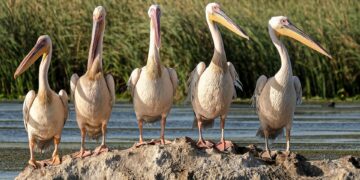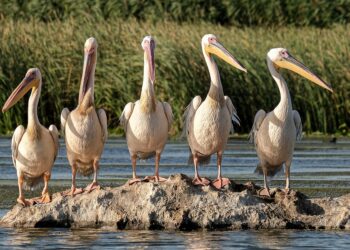[ad_1]
Guardians of the Wild: Strategies for Preserving Fragile Ecosystems
Preserving fragile ecosystems is crucial for maintaining biodiversity and ensuring the health of our planet. As guardians of the wild, it is our responsibility to protect these delicate environments from human activities that threaten their existence. In this article, we will explore strategies for preserving fragile ecosystems and discuss the importance of conservation efforts.
The Importance of Preserving Fragile Ecosystems
Fragile ecosystems are often home to a diverse range of plant and animal species that are uniquely adapted to their environment. These ecosystems provide essential services such as clean air, water, and food, and play a key role in regulating the Earth’s climate. However, human activities such as deforestation, pollution, and climate change are putting these ecosystems at risk.
Preserving fragile ecosystems is essential for maintaining biodiversity, protecting endangered species, and ensuring the long-term health of our planet. By conserving these environments, we can help to mitigate the impacts of climate change, preserve natural resources, and support sustainable development.
Strategies for Preserving Fragile Ecosystems
There are a number of strategies that can be used to preserve fragile ecosystems and protect them from degradation. These strategies include:
Protected Areas
One of the most effective ways to preserve fragile ecosystems is to establish protected areas where human activities are limited or prohibited. National parks, wildlife reserves, and marine sanctuaries are examples of protected areas that help to safeguard biodiversity and protect natural habitats from destruction.
Sustainable Resource Management
Sustainable resource management practices can help to ensure that natural resources are used in a way that does not deplete or degrade fragile ecosystems. This includes practices such as sustainable logging, fishing, and agriculture, which aim to maintain the health and productivity of ecosystems while meeting the needs of local communities.
Community Involvement
Engaging local communities in conservation efforts is essential for the long-term success of preserving fragile ecosystems. By involving communities in decision-making processes and providing them with incentives to protect their natural environment, we can create a sense of ownership and stewardship that will help to ensure the sustainability of conservation efforts.
Educational Programs
Educational programs can help to raise awareness about the importance of preserving fragile ecosystems and inspire individuals to take action. By teaching people about the value of biodiversity, the impacts of human activities on the environment, and the benefits of conservation, we can empower individuals to make informed choices that support the protection of fragile ecosystems.
Common Questions About Preserving Fragile Ecosystems
Here are some common questions about preserving fragile ecosystems:
What are the main threats to fragile ecosystems?
The main threats to fragile ecosystems include deforestation, habitat destruction, pollution, climate change, and invasive species. These threats can lead to loss of biodiversity, habitat fragmentation, and ecosystem collapse.
How can individuals help to preserve fragile ecosystems?
Individuals can help to preserve fragile ecosystems by reducing their carbon footprint, supporting conservation organizations, volunteering for conservation projects, and advocating for policies that protect the environment. By making sustainable choices in our daily lives, we can all contribute to the preservation of fragile ecosystems.
Why is it important to preserve fragile ecosystems?
Preserving fragile ecosystems is important because they provide essential services such as clean air, water, and food, support biodiversity and ecosystem resilience, and play a key role in regulating the Earth’s climate. By protecting these ecosystems, we can ensure the long-term health and sustainability of our planet.
Conclusion
As guardians of the wild, it is our responsibility to protect and preserve fragile ecosystems for future generations. By implementing strategies such as establishing protected areas, practicing sustainable resource management, involving local communities, and promoting educational programs, we can help to safeguard biodiversity, protect endangered species, and ensure the health of our planet. Together, we can make a difference and ensure a sustainable future for all living beings.
[ad_2]












